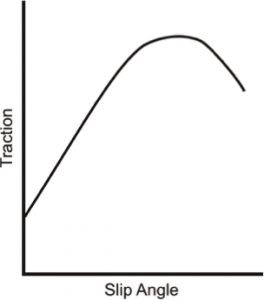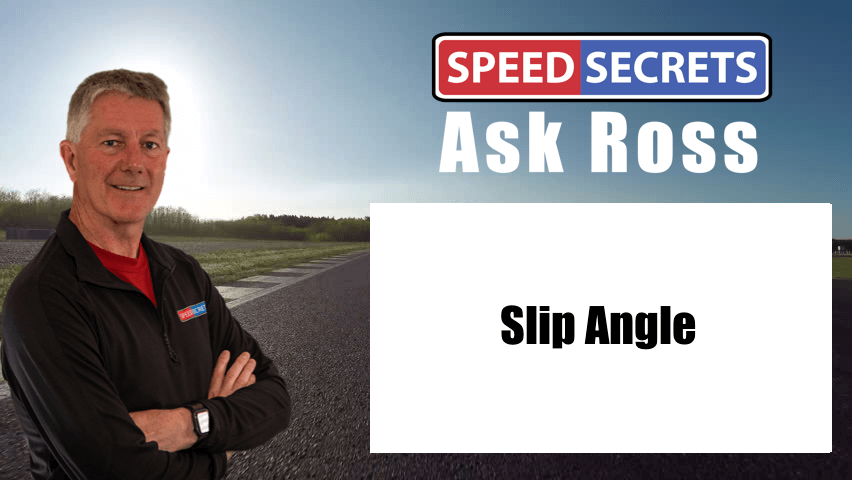 Q: “What is slip angle? I hear it talked and written about, but I don’t really understand what it means, or how I can use this knowledge to drive faster.”
Q: “What is slip angle? I hear it talked and written about, but I don’t really understand what it means, or how I can use this knowledge to drive faster.”
A: If you want an engineer’s explanation of slip angle, I’d suggest the book Physics for Gearheads by Randy Beikmann (it’s excellent). But if you want the layman’s explanation – and by layman, I mean the driver’s perspective – then here’s what slip angle is.
Imagine looking down on the front tires of a car from above as you turn into a corner; the front tires are now going to be pointing at some angle different from straight ahead. Let’s say that for a right-hand corner, they’re pointing at the one o’clock position on a clock face, with 12 o’clock being straight ahead.
If you’re driving at speed, with the front tires at or near their limit of grip and pointing at one o’clock, the car will not go exactly where they’re aimed. In fact, the car will travel in the direction of something less than where those front tires are pointing.
The difference between the angle the tires are aimed and the angle the car is traveling is the slip angle.
It’s easy to think of this difference as the tire slipping, and therefore the term “slip angle.” But it’s not totally accurate that they’re slipping. Realistically, it’s the twist in the rubber and tread blocks of the tire that is actually causing the feel that we, as drivers, associate with slip.
The interesting thing is that as slip angle increases, traction or grip increases… until it reaches a peak, and the tires begin to lose grip with increased slip angle. It may seem strange to think of a tire gaining grip as it slips more, but remember that the tire is not actually slipping, it’s twisting. Also, you probably know that at a gut level it feels as though the tires on your car do gain traction the harder you corner and they feel as though they’re slipping a little bit; you also feel when you’ve gone too far and the tires are “slipping” too much, and now you’re losing grip.
 It’s good to have the Traction versus Slip Angle graph in mind when you’re thinking about this because you can picture how tires gain grip with a higher slip angle, reach a peak, and then taper off. I’m sure you also know that tires don’t reach this peak and then suddenly lose all grip as you go sliding, spinning off the track! They gradually and progressively lose traction, although some tires seem to let go more quickly than others.
It’s good to have the Traction versus Slip Angle graph in mind when you’re thinking about this because you can picture how tires gain grip with a higher slip angle, reach a peak, and then taper off. I’m sure you also know that tires don’t reach this peak and then suddenly lose all grip as you go sliding, spinning off the track! They gradually and progressively lose traction, although some tires seem to let go more quickly than others.
I’ve talked about the front tires so far, and it’s relatively easy to imagine how the difference between the direction the tires are pointing and the direction the car is traveling is their slip angle. What is harder to wrap our minds around is how this applies to the rear tires, but the same thing is happening; this is where it gets easier to picture this as them slipping, rather than the twisting that is more accurate.
Still, whether you’re thinking about the front tires, the rear tires, or both, your goal is to drive the car with all four tires as close to the top of the Traction-Slip Angle curve.

